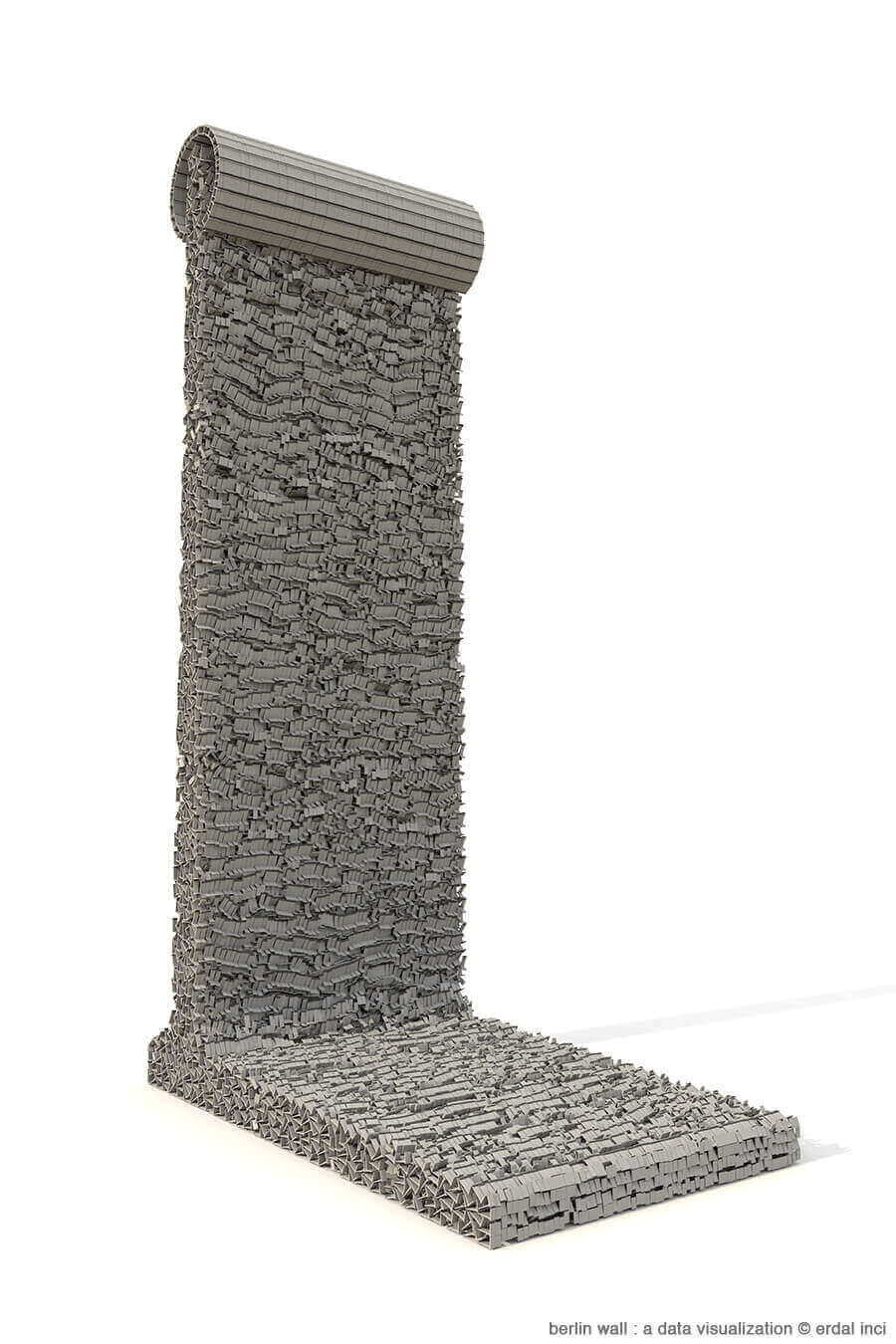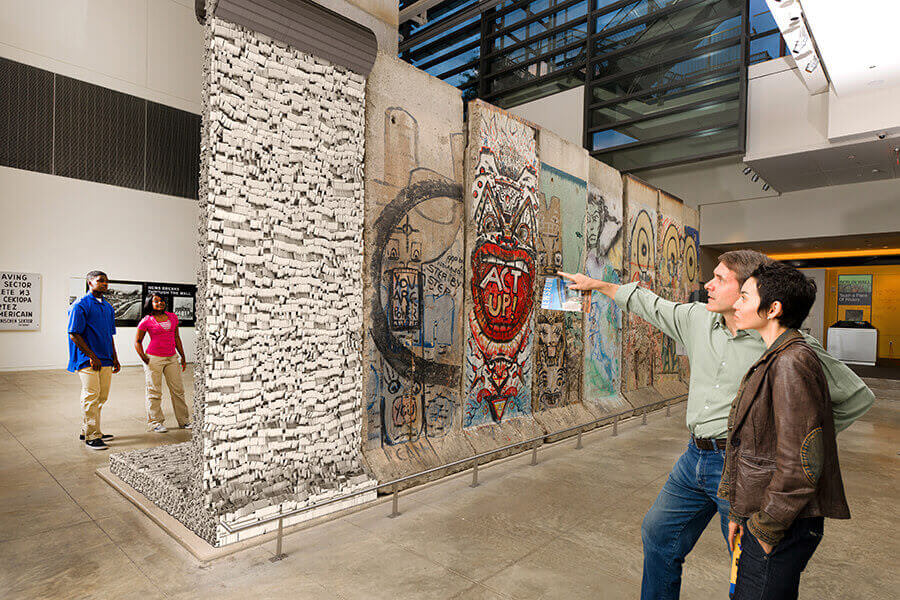The significance of the Berlin Wall, which fell only 25 years ago, is still huge but do we really understand just how vast the structure was?
A Turkish artist based in Berlin created a computer-generated 3D model of the Berlin wall, compiled together in a single frame.
Erdal Inci said on his website he said: “When we think about the Berlin Wall, despite having an idea of how its length, we can’t easily envisage its real size.”
How Did He Create the Berlin Wall
So to solve this, Erdal Inci came up with the idea of creating the model to give us some perspective.
Inci took to Wikipedia to research the topic first. He found that the “fourth-generation wall” (Grenzmauer 75) was constructed from 45,000 separate sections of reinforced concrete, each 3.6 metres high and 1.2 metres wide.
And so, his next step was to make a 3D model of a single segment from its blueprint and then duplicate it 45 thousand times.
“At that point I needed to decide how to compose all the pieces, so I ended up placing them together in the same proportions all from of a single segment. Doing this ensured that we are able to see both the shape of a single segment, on a larger scale, with more detail and the entire quantity that makes up the wall (exactly 45K pieces) together,” he said. It looks like this:
Another step of the project is to have a 3D printed version of this fractal design in 1:1 scale (3,6 meters). So the viewer can easily recognise its form from a distance and upon closer inspection the wall can be viewed in its entirety.
To envisage the actual size of the wall, the colossal structure (240 metres high) was placed in Alexanderplatz in true scale for this rendered image.
Currently, Inci is in search of commissions or sponsors to have it printed for museums (see a mockup below). If you’re interested in doing this, you can contact him through his website.
License: The text of "Berlin Wall is Stacked into a Single Frame" by All3DP is licensed under a Creative Commons Attribution 4.0 International License.

